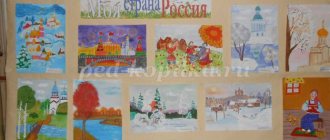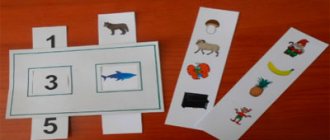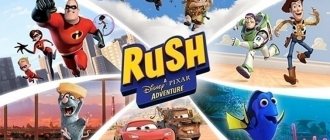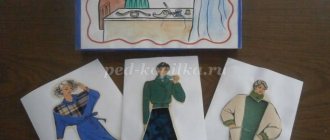Financial vocabulary for kids
- A bank is a place where people can carry out various transactions with money.
- Deposit is money that was brought to the bank and given to be kept there.
- An ATM is a device that allows you to withdraw or deposit money onto a bank plastic card.
- Assets are anything that brings in money.
- Liabilities are what take money.
- Money is pieces of paper or coins that serve as a general exchange. For example, for money you can buy anything in a store, or go to the movies. Different countries have different money.
- Card - fully called a bank payment card. This is a piece of plastic that you can use to pay for purchases in stores, online, and many other places.
- A loan is money that a person, if he lacks for something, can ask to borrow from a bank. For example, if you want to buy a computer, but you don’t have enough money, the bank can lend you money. But then the bank will have to repay the debt and pay interest.
- A bill or banknote is what paper money is called. A bill or banknote is one piece of paper.
- Cash flow or profit is the difference between income and expenses over a period of time.
The following types of coins and banknotes are currently in use in Russia:
Didactic games in economics for older preschoolers with goals
Card index of didactic games on the economic development of children of senior preschool age 5-7 years.
The material will be useful to preschool teachers of any type who implement gaming technology in their work.
Game “Train of Coins and Banknotes” Purpose: to teach how to build a sequence of increasing and decreasing the value of coins and banknotes. Material: A set of coins for each child for practical activities, a “train of coins and bills”, where children can arrange coins and bills in increasing and decreasing sequence; Progress of the game: - A “train of coins and bills” came to visit us. What kind of cargo do you think he is carrying? (coins) - Correct, but the coins on this train are located in a certain order. The first carriage carries a coin of the highest denomination. Look at your coins, which coin can travel in the first carriage? - Let's put a 5 ruble coin in the first carriage, what coin will go in the next carriage? Next, the children distribute the coins among the cars in descending order of denomination. - What coin is in the last carriage? This means that this coin is of the lowest denomination (1 kopeck). You can ask the children questions about this task: Which coin is in the carriage between 1 kopeck and 10 kopecks? - Guys, is it possible to distribute banknotes among the carriages in the same way (children distribute banknotes among the carriages). Game “If..., then...” Goal: introduce the following concepts into the active vocabulary: “grocery store”, “manufactured goods store”, learn to differentiate concepts, find similar and distinctive features; Clarify children's ideas about different types of stores. Progress of the game: - Guys, I will tell you a sentence, and you will have to continue this sentence, for example, “If you go to a grocery store, what can you buy there?” • If you go to a shoe store, what can you buy there? • If we go to a clothing store, what will we buy there? • If we go to a furniture store, what will we buy there? • If you go to a grocery store, what can you buy there? • If you go to a department store, what can you buy there? The game “What is sold where?” Goal: to learn how to distribute items for sale in different types of stores. Material: pictures depicting various types of goods. Progress of the game: - Look, guys, here we have a lot of goods that you can buy in the store. In which store can you buy these products? We look at pictures with children depicting goods (bread, loaf, sausage, skirt, shampoo, washing powder, toothpaste, jacket, and others). Together with the children, we determine which store sells the presented product. Game "Expensive - Cheap". Goal: to teach children to correlate the price and quality of a product. Material : morphological table with the names of different types of stores and products sold in them. Red signs indicate expensive goods, blue signs indicate cheap goods. Progress of the game: - Look, guys, we have various goods here. And I have such interesting signs - blue and red - the blue sign indicates a cheap product, and the red sign indicates an expensive product. What do you think is the most expensive and cheapest product? Lay out the signs. — Place red signs near expensive goods, and blue signs near cheap goods. Why did you decide so? Game “Shop” Purpose: to teach children to practically carry out the actions of purchasing goods, to say out loud the phrase “WORTH IT,” “I’M CRYING,” “CHANCE.” Material: small goods or illustrations of goods, price tags; money to buy goods for each child, product catalogs, price tags. Progress of the game: - Guys, let's play shop. - What do we need for this? — The right product, put price tags on the product, put it on the shelves. Together with the children, we determine the prices of goods, write price tags, and arrange goods on shelves.
We choose a seller or the teacher himself can play this role at the beginning of the game. We require the following sequence of questions and answers from children: - What, Masha, do you want to buy?
— I want to buy milk. It costs 12 rubles. I give you 15 rubles. - Here's 3 rubles in change. We interview several children. Then you can change the seller. Game "Auction" Purpose : to teach children to establish a connection between price, cash amount and change. Material : small goods or illustrations of goods, money. Progress of the game : All children are given money to purchase goods.
- Look, guys, I have a beautiful teddy bear in my hands.
Who wants to buy it? — The bear costs 5 rubles. - Who will buy Mishka? -There are many people who want to buy the Bear, then I add the price. The bear costs 6 rubles. Who has that amount of money? Next, we sell a few more toys to the children. You can use the word “Cost” (What is the cost of Mishka?) to introduce it into the child’s active vocabulary. Outdoor game “Find a Pair” Purpose : to teach children to establish the relationship between the dignity of money. Material : coins and bills of different denominations (one set of coins and bills for each child). Progress of the game: Children dance to the sound of music; when the music stops, children must find a pair according to the value of the coins. A pair consists of children, where one has a coin of a lower denomination, and the other has a coin of a higher denomination. Game "What does it do?" Goal : Clarify the names of such professions as doctor, teacher, driver, artist; strengthen children's ideas about professions. Progress of the game: - I will tell you the profession, and you will name what the person does. Cook - cooks porridge; Turner – makes parts; Doctor – treats people; A teacher teaches children; Driver – drives the car; Seller – sells products and goods; — What other professions do you know? What do people in these professions do? The game “Who works where?” Goal : learn to establish a connection between a person’s place of work and profession. Progress of the game: - Works in the police... - Works in a store... - Works in a bakery... - Works in a taxi... - Works in a fire department... - Works in a school... - Works in a hospital... You should draw the attention of children to what can be called not one profession, but several: Doctors, nurses, cleaners, cloakroom attendants, etc. work in the hospital. Game "Shop". Goal : - consolidate the concept of “store”, various types of stores; — introduce the rules of behavior in the store; — practically consolidate the rules of behavior in the store in a gaming situation; — cultivate a culture of behavior in public places; Material: Products for sale, price tags, display cases, supposed cash register, money for purchasing goods. Progress of the game: Together with the children, we decorate the store windows and paste the prices of the goods. Organize 3 children to work in the store itself. The first child is a cashier, sits at the register and punches out checks. Two children play the role of sellers: they offer children - buyers the goods presented in the store. It is important that children follow the rules of behavior in the store when purchasing goods. If the rules are not followed after the game, comment on the mistakes without getting personal, but identify typical mistakes. After some time, you can change the sellers so that they can demonstrate the rules of behavior in the store. Behavior rules. — When you come to the store, how should you behave? — What rules of conduct exist in public places? • You need to walk around the store floor quietly and calmly. You can talk in a low voice, consult with each other. Why? • In a store, you need to carefully examine the products on the shelves, choose the product you like, find out its price, check how much money you have in your wallet, and then make a purchase decision. Why? • If necessary, you need to seek advice and find out how to use the chosen item. Preference should be given to quality products. Why? • Do not forget when talking with the seller and cashier about words such as “thank you”, “please”, etc. • When talking with the seller, be patient, do not interrupt, listen to the end. • Having made a firm decision about what product you will buy and remembering its price, go to the cashier, pay for the purchase, and receive a receipt. • Go to the seller with the receipt and explain what toy you are buying. • Check again the quality of the purchased item: whether it has any breakages or whether its appearance is spoiled. Why? • Remember what words to thank the seller. Questions will help children discover the essence of some rules and understand their importance and necessity. The teacher explains some rules to the children himself, and some can be asked to explain to the children.
We recommend watching:
Economic education of preschool children Notes on economics in the senior group of a preschool educational institution Essay by a kindergarten teacher. Formation of financial literacy in preschool children Introductory course on teaching the basics of financial literacy to children of the middle group of preschool educational institutions
Similar articles:
About the profession of a banker for children








